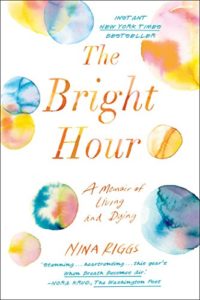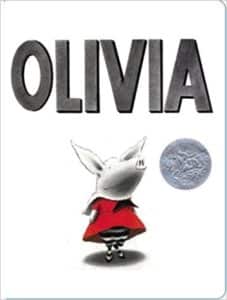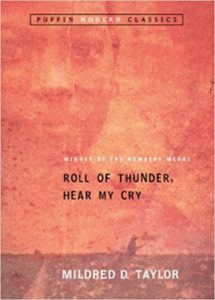At Tweetspeak, books matter. We host a book club, we review books, and we publish them at T.S. Poetry Press. We’re dedicated to literacy — for life. And we want to learn from each other about reading in the wild.
Do you want to be a wild reader? Are you reading wildly already? We’re using Donalyn Miller’s Reading in the Wild: The Book Whisperer’s Keys to Cultivating Lifelong Reading Habits to explore what it means to be a wild reader — someone most likely to embrace literacy for life. Read through these 5 characteristics and see which ones fit your reading style and which you might incorporate this month.
5 Main Characteristics of Wild Readers
1. They dedicate time to read.
We often discuss reading emergencies in this space. Here’s another one: car trips. I prefer a hard copy because the glare from an electronic screen can occasionally annoy the driver. On a recent trip from California to Texas, I brought along a book purchased at an often-overlooked bookseller known to carry excellent gems: national parks. I bought These Is My Words: The Diary of Sarah Agnes Prine, 1881-1901 by Nancy E. Turner at the Fort Davis National Historic Site and read it while we drove straight through Arizona, which is where most of the story is set. Imagine if the Little House on the Prairie books started when Laura Ingalls Wilder was 17 and included more harrowing descriptions of frontier violence — that’s this book. Reading it made me wonder this: If Sarah’s story were written for children, what parts might have been left out or treated with a more careful hand? What might Laura’s have sounded like if she was writing for adults?
2. They self-select reading material.
If a book has been banned or challenged, then I want to read it. I missed Banned Books Week, the last week of September, but then took the list of Top 10 Challenged Books in 2016 to the library. (I had already read two on the list: John Green’s Looking for Alaska and Rainbow Rowell’s Eleanor & Park, both of which I wrote about in The Joy of Poetry.) Our library had George by Alex Gino, about a transgender fourth-grader. A school play based on Charlotte’s Web is the backdrop for this story, and there is no way I can even tangentially encounter E.B. White’s classic and not be moved to tears. The play doesn’t occur until chapter 10 of 12, and honestly, until George took the stage, I wasn’t sure the story worked for me. Then, boom! my opinion transformed (as it should; that chapter is titled “Transformations”).
3. They share books and reading with other readers.
The same friend who recommended Bruce Handy’s Wild Things: The Joy of Reading Children’s Literature as an Adult also recommended The Bright Hour: A Memoir of Living and Dying by Nina Riggs, the great-great-great granddaughter of Ralph Waldo Emerson. The book includes her thoughts on his words and those of Michel de Montaigne. It’s a tough, yet beautiful book, more like Paul Kalinithi’s When Breath Becomes Air than anything else I’ve read, but this is more acerbic. If you want to get a sense of her style, read When a Couch Is More Than a Couch, published five months before she died.
4. They have reading plans.
Last month I mentioned that I was using Wild Things as a sort of reading plan. So this month I spent an hour reading and listening to audio versions of several books by Dr. Seuss. The good doctor (who was not a doctor) was neither my nor my kids’ favorite. It took my daughter’s participation in a local production of Seussical for me to appreciate Seuss. As I read The Cat in the Hat, Hop on Pop, If I Ran the Circus, If I Ran the Zoo, and McElligot’s Pool, I was struck with the stories’ playfulness. That same day I heard Lin-Manuel Miranda say on a podcast that he didn’t realize he inadvertently incorporated some of the wordplay from Hop on Pop into the opening of Aaron Burr, Sir until he was reading the book aloud to his son. Miranda’s conclusion: “Kids love wordplay. Full stop.”
5. They show preferences.
After mentioning my love for A Room With a View by E.M. Forster in my list of Top 10 Books That Inspired Me (and You), I reread it. Thus, I was filled with joy. When life causes my blood pressure to rise and my spirits to droop, I need a comedy of manners featuring a saucy red book: “The garden was deserted except for a red book, which lay sunning itself upon the gravel path.”
October’s Pages
Finished
Adult
A Room with a View, E.M. Forster
The Bright Hour: A Memoir of Living and Dying, Nina Riggs
These Is My Words: The Diary of Sarah Agnes Prine, 1881-1901, Nancy E. Turner
Early Readers and Picture Books
Babar and the Ghost, Laurent de Brushoff
Olivia, Ian Falconer (Wild Things rec)
The Cat in the Hat, Hop on Pop, If I Ran the Circus, If I Ran the Zoo, McElligot’s Pool, Dr. Seuss (Wild Things rec)
George, Alex Gino (Note: This book was shelved in YA, but it reads like a solid middle grade story.)
Roll of Thunder, Hear My Cry, Mildred D. Taylor (Wild Things rec)
Sliced (1/4 to 1/2 Only: Got What I Needed and Moved On or Plan to Finish Someday)
Nope.
Abandoned (Not My Cup of Tea, It Bogged Down Quickly, or Others Beckoned)
If I include book samples I downloaded on my Kindle and then decided not to purchase, then, well, I have entries.
A Hole in the Wind: A Climate Scientist’s Bicycle Journey Across the United States, David Goodrich
Bored and Brilliant: How Spacing Out Can Unlock Your Most Productive and Creative Self, Manoush Zomorodi
Too Fat, Too Slutty, Too Loud: The Rise and Reign of the Unruly Woman, Anne Helen Petersen
The World Beyond Your Head: On Becoming an Individual in an Age of Distraction, Matthew B. Crawford
Started (The Jury is Still Out. Will I Finish?)
A Wrinkle in Time, Madeleine L’Engle (Rereading. Of course I’ll finish!)
Your turn
1. Share anything about you and the 5 main wild reader characteristics. How do you display them, or wish you did, or plan to in the future?
2. Share your October pages. Finished, sliced, started, and abandoned are all fair game.
Photo by UX Gun, Creative Commons, via Flickr. Post by Megan Willome, author of The Joy of Poetry.
__________
“Megan Willome’s The Joy of Poetry is not a long book, but it took me longer to read than I expected, because I kept stopping to savor poems and passages, to make note of books mentioned, and to compare Willome’s journey into poetry to my own. The book is many things. An unpretentious, funny, and poignant memoir. A defense of poetry, a response to literature that has touched her life, and a manual on how to write poetry. It’s also the story of a daughter who loses her mother to cancer. The author links these things into a narrative much like that of a novel. I loved this book. As soon as I finished, I began reading it again.”
—David Lee Garrison, author of Playing Bach in the D. C. Metro
- Perspective: The Two, The Only: Calvin and Hobbes - December 16, 2022
- Children’s Book Club: A Very Haunted Christmas - December 9, 2022
- By Heart: ‘The night is darkening round me’ by Emily Brontë - December 2, 2022





Glynn says
“Wild reader” sounds like my autobiography.
Read in October:
Looking at Canaletto – the Queen’s Gallery
Hunted Down: Detective Stories by Charles Dickens
The St. Francis Holy Fool Prayer Book by Jon Sweeney
Living the Season Well by Jody Collins
Lost in Faith: and poetry, poems by Mary Harwell Sayler
Legend of the Celtic Stone, a novel by Michael Phillips
Cain: Poems by Luke Kennard
The Mind Readers, a mystery by Margery Allingham
The Canticle of the Creatures by Luigi Santucci
A Most Inconvenient Death, a mystery by Donna Fletcher Crow
Constellation of Genius: 1922 Modernism Year One by Kevin Jackson
My Favorite Color is Blue. Sometimes by Roger Hutchinson
The World Broke in Two: Virginia Woolf, T.S. Eliot, D.H. Lawrence, E.M. Forster and the Year that Changed Literature by Bill Goldstein
Murder in the Morning Edition, a mystery by Peter Bartram
An Ancient Strife, a novel by by Michael Phillips
Martin Luther by Eric Metaxas
My Soul Waits by Martin Shannon
Your Light Gives Us Hope by Anselm Grin
Pearl, a poem translated by Simon Armitage
Death of a Busybody, a mystery by George Bellairs
Can You See Anything Now? a novel by Katherine James
Megan Willome says
Wild indeed, Glynn.
And I forgot to mention Jody Collins’ book, “Living the Season Well.” Darn–I even wrote about it on my blog: http://meganwillome.com/2017/10/22/living-the-season-well-by-jody-collins/.
Laura Lynn Brown says
Why nope on the Matthew Crawford? I liked Shopclass as Soulcraft.
Megan Willome says
I’d put that nope under “others beckoned.”
Bethany R. says
What an interesting thought about the Little House author: ” What might Laura’s have sounded like if she was writing for adults?”
This week, I’m reading A Man Called Ove, by Fredrik Backman. I haven’t gotten to turn many pages these last couple days, so I’m looking forward to diving back in today, at lunch.
Megan Willome says
Bethany, I’ve had several people recommend that book to me. Let me know how you like it.
Katie says
I borrowed The Bright Hour: A Memoir of Living and Loss by Nina Riggs. Found it to be authentic and moving. I have a couple of friends who have breast cancer and have considered recommending it to them, but have hesitated since Nina’s story while full of hope and humor at times is in the end not one of survivorship. Any thoughts or other recommendations?
Megan Willome says
Katie, it really depends on the friend. Are they looking for the sorts of stories that focus on overcoming?
I’m gonna crowdsource this one: Crowd? Sources, please.
Sandra Heska King says
Finished
The Places in Between by Rory Stewart (finally! I started it this summer but got sidetracked.)
Love Big, Be Well by Winn Collier
Good Poems by Garrison Keillor (I’ve been bouncing around in it, but I’m pretty sure I’ve hit them all.)
Frederick by Leo Lionni
In progress
Storm in a Teacup by Helen Czerski
When the Plow Cuts by Katie Andraski (a re-read)
Poetry Will Save Your Live by Jill Bialosky
I want to be Glynn when I grow up.
Glynn says
“I want to be Glynn when I grow up.”
Old and crotchety?
Sandra Heska King says
No. Luminous and legendary.
Megan Willome says
Hear! Hear!